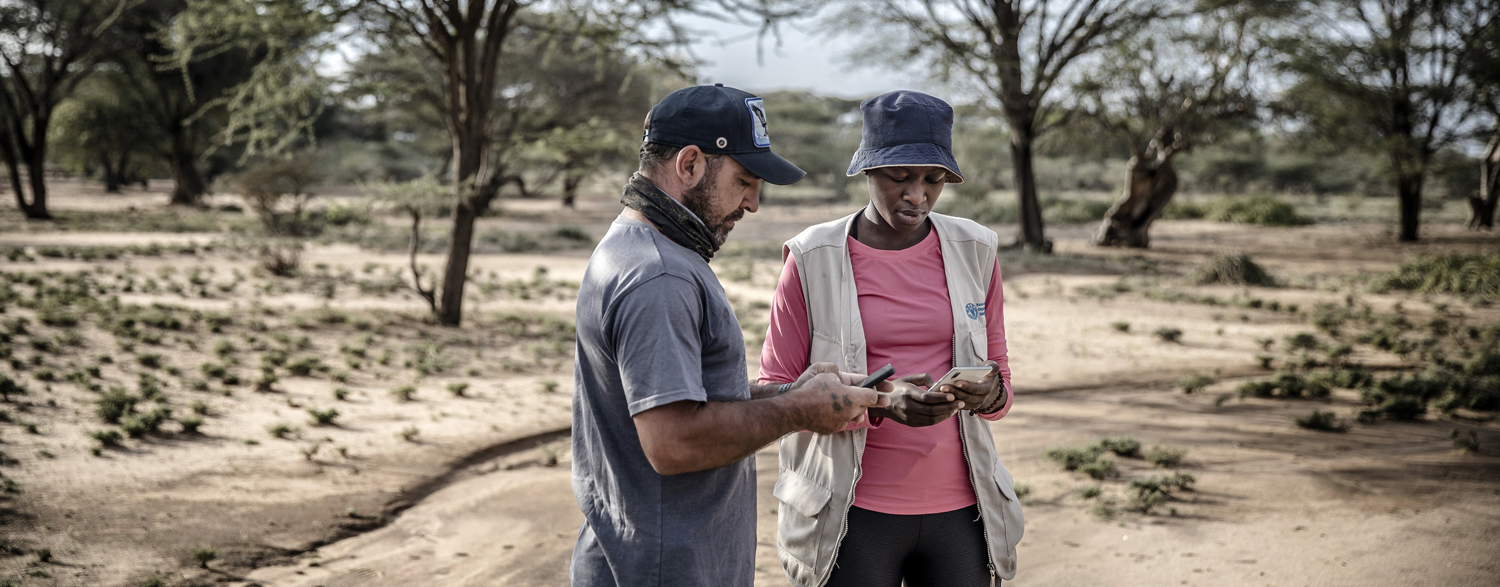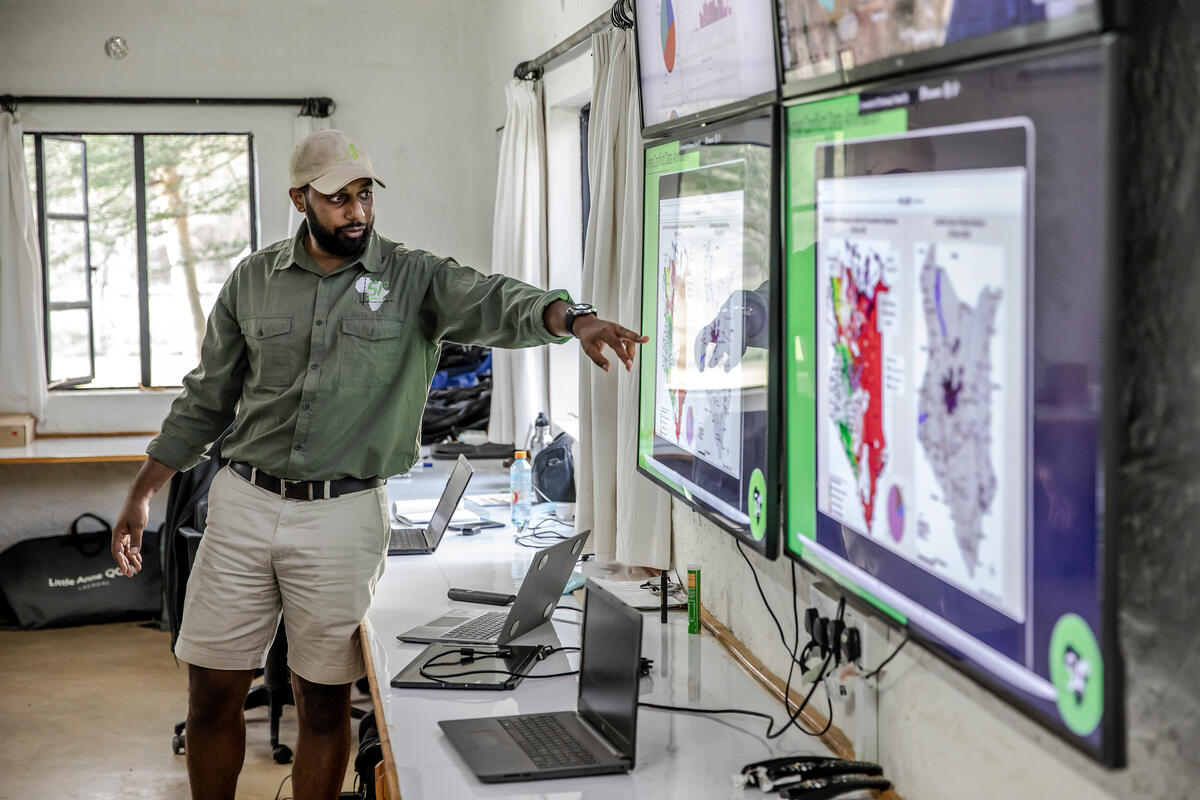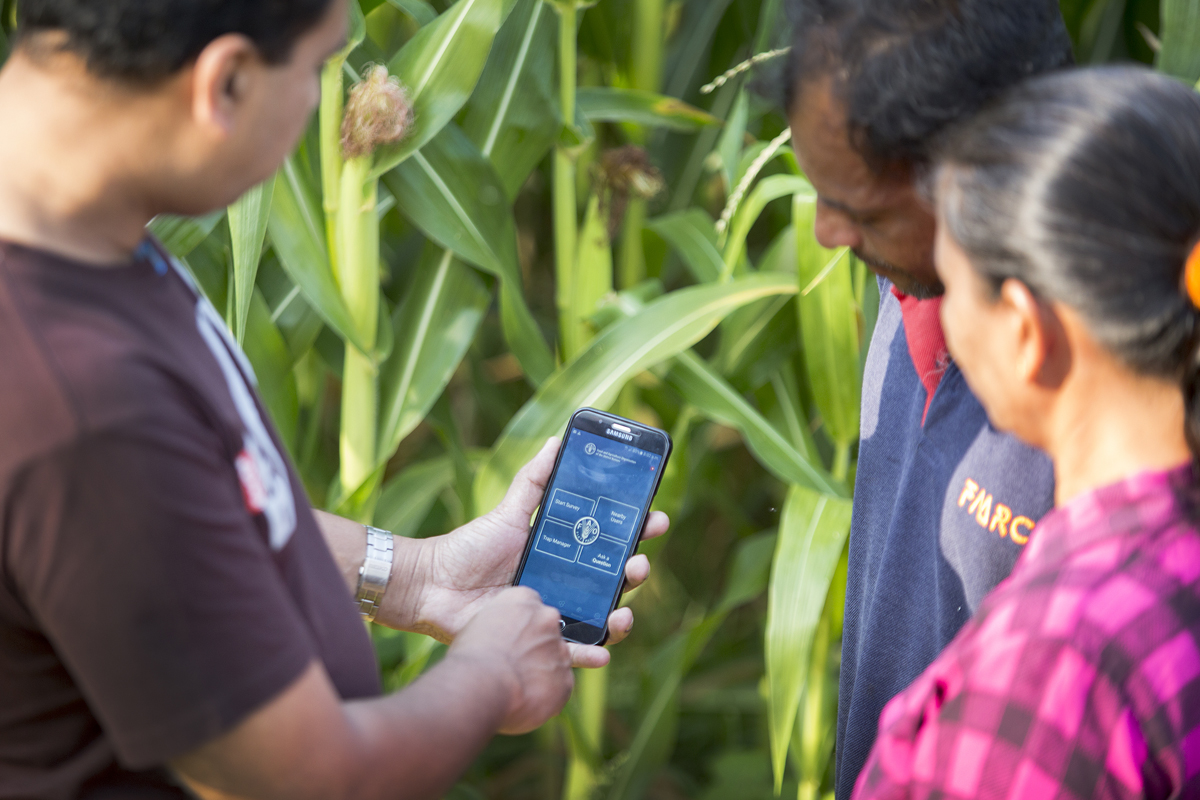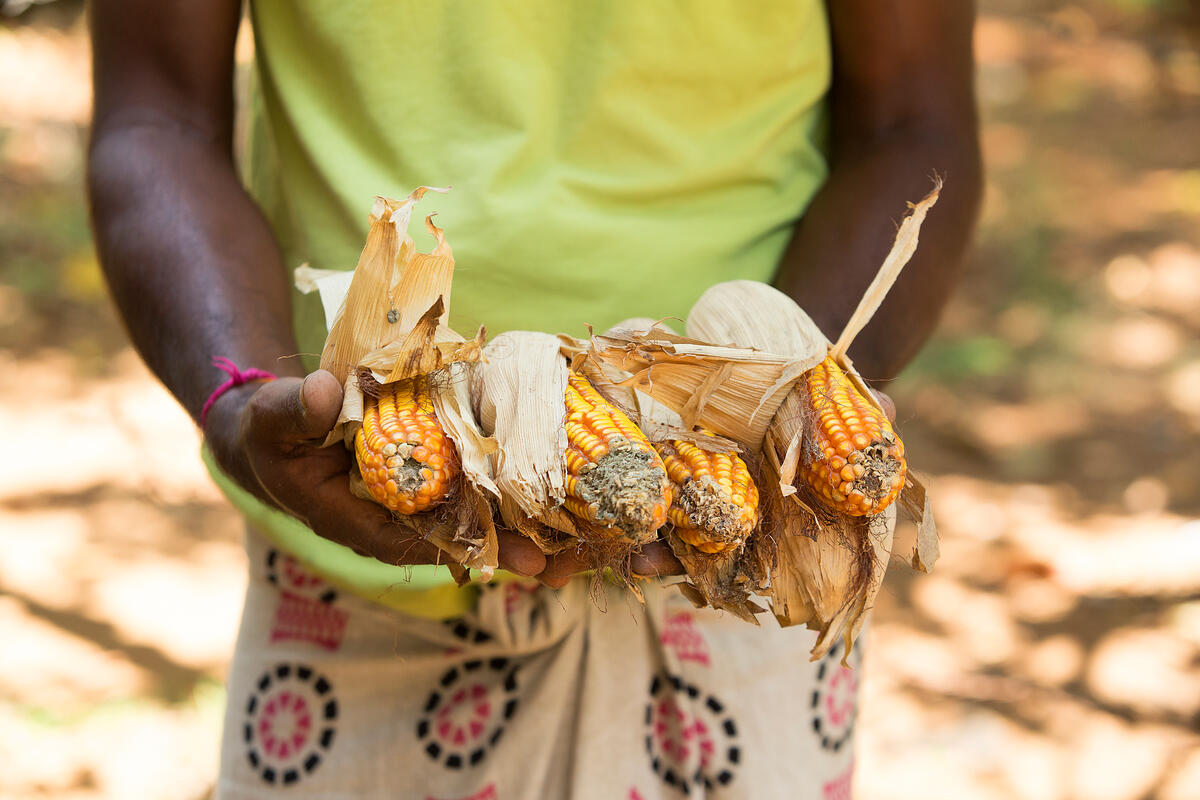
How early warning systems for plant health protect crops, people, and planet
In the morning heat of Kenya’s remote Turkana County, a field officer looks at the patch of green vegetation that dots the landscape. He notes the telltale signs – a few hoppers clustered near sprouting grasses, moisture in the soil from a recent rain. He pulls out his tablet – the eLocust3 – and logs the data, capturing the exact location and conditions.
Within moments, his report transmits via satellite to the national locust centre, and from there to the Desert Locust Information Service in Rome. On the other side of the world, a Forecasting Officer analyses this report with satellite imagery, weather data, and maps of vegetation.
To the untrained eye, it might seem like a routine check. But in reality, this seemingly small act – enough data being shared at right time, in the right locations – could make the difference between an isolated event and a full-scale locust plague threatening the food security of millions of people.
This is the quiet power of early warning and early action. With the right systems in place, countries can prevent crises before they spread - protecting crops and the health of people, animals, and ecosystems that depend on them.


What is early warning and why does it matter?
Early warning for plant health means detecting plant pests and diseases at the earliest stage, before they spiral into emergencies. This is especially important for transboundary plant pests that can cross borders, turning local outbreaks into regional challenges. Early warning combines field surveillance, modern technology, and forecasting to give countries the information they need to act fast and effectively. But its benefits go far beyond stopping pests.
Plant pest early warning is integral to One Health because it protects crops. Healthy plants form the foundation of agrifood systems that support human and animal nutrition and health. Preventing pest outbreaks reduces the need for large-scale chemical treatments that can affect human health, non-target species like pollinators, and biodiversity. It also helps preserve ecosystem services that maintain air, water, soil, and climate stability. Like disease surveillance, plant health early warning works best when systems at all levels are connected and supported - not only by technology, but by policies and partnerships that enable rapid, coordinated responses.
Nearly a century of vigilance and innovation
FAO’s Desert Locust Information Service, or DLIS, is the world’s oldest migratory pest early warning system. Founded in the 1930s in the United Kingdom and transferred to FAO, DLIS has been producing forecasts, alerts, and more than 500 monthly desert locust bulletins since the late 1970s. Through the locust watch platform, DLIS provides round-the-clock global monitoring of weather, ecological conditions, and locust activity, ensuring all countries have up-to-date assessments to guide early action. Its work builds on nearly 100 years of historical data, combined with real-time reports from the field. The service also maintains a unique collection of maps covering about 50 countries – 32 million square kilometres, or 20 percent of Earth’s land surface – that help verify location data and support precise forecasting.
The Desert Locust Information Service produces monthly bulletins with six-week forecasts and seasonal rainfall predictions looking six months ahead. When conditions indicate a risk of breeding or migration, DLIS issues alerts to affected countries, donors and the international community to mobilize swift and early action. Its tools include eLocust3 tablets and a series of mobile phone apps for real-time data capture, RAMSESv4 GIS for spatial analysis, greenness and soil moisture maps to identify breeding areas, drones, and satellite systems to extend surveillance into remote zones. The strength of DLIS lies in how it connects technology, training, and partnership – ensuring that early warning turns into early, preventive action that protects food security, rural livelihoods, and ecosystems.


Tracking fall armyworm before it spreads
Native to the Americas, fall armyworm was first detected in Central and West Africa in early 2016. Within two years, it had spread across almost all of sub-Saharan Africa, and by late 2019 it had reached parts of North Africa, the Near East, and much of Asia, including China, India, and Southeast Asia. By 2024, fall armyworm had been confirmed in more than 80 countries across Africa, Asia, Oceania, and Europe. In response to this fast-moving pest, FAO developed the Fall Armyworm Monitoring and Early Warning System, or FAMEWS. This digital tool shows how mobile technology can transform plant pest management. The system allows farmers and plant health officers to log infestations directly from the field, recording pest stage, damage level, and control measures. Even where connectivity is limited or absent, data are stored and uploaded when possible, feeding into a global platform that visualizes pest spread in near real time. By connecting thousands of data points, it provides a continent-wide picture of the pest’s spread and gives decision-makers the best evidence they need to act swiftly and precisely. The system supports integrated pest management, helping to balance pest control with the protection of human and environmental health.
A digital system for red palm weevil early warning
The SusaHamra system, developed by FAO represents a new generation of pest monitoring for one of the Near East’s most damaging invasive species – the red palm weevil. The system combines a data collection tool with a cloud-based platform for analysis and mapping. Inspectors in the field use the app to record visual inspections and pheromone trap results, gathering detailed information on infested palms - from the species and age of the tree to the location and characteristics of the infestation. What makes SusaHamra effective is its integration of local field data with national and regional analysis. Once inspectors submit their reports, the data are verified by national authorities and automatically mapped and analysed on the platform. This creates dynamic visualizations that help authorities plan control strategies, allocate resources, and adapt interventions as conditions change. The system was launched in 2023 and has already been adopted by countries like Tunisia and Jordan as part of their national red palm weevil management programmes. By turning field data into actionable intelligence, SusaHamra helps countries move from reactive to preventive pest management.
Prevention is the most effective strategy
Plant health early warning systems are essential to building lasting resilience. They protect food security, reduce health risks from excessive pesticide use, and safeguard the ecosystems that support human and animal well-being.
Prevention through early action is not only more effective, it is also more affordable and sustainable. Every dollar spent on early warning saves far more in emergency aid and recovery. As climate change expands the range and behaviour of plant pests, investing in early warning is investing in a safer future for people, animals, and the planet.
